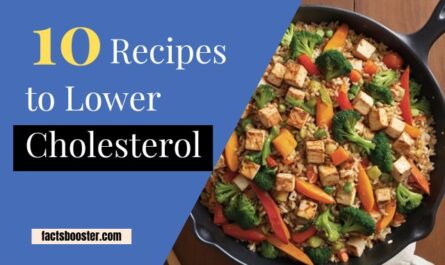Inflammation is your body’s natural response to protect itself against harm, ranging from infections to injuries. However, when inflammation becomes chronic, it can lead to long-term health issues, including heart disease and arthritis. Thus, diet to reduce inflammation is critical.
This is where diet steps into the spotlight. Switching to an anti-inflammatory diet can help reduce inflammation levels and safeguard your well-being. By focusing on anti-inflammatory foods, you can not only reduce inflammation but also boost your health in various ways.
Key Takeaways:
- Diet to Reduce Inflammation: Emphasizes the significance of adopting an anti-inflammatory diet.
- Anti-inflammatory foods: Highlights the importance of incorporating foods with anti-inflammatory properties.
- Reduce inflammation: Stresses the benefits of dietary choices in managing inflammation.

Understanding Inflammation
Inflammation comes in two forms: acute and chronic. While acute inflammation is your body’s natural defense mechanism against injuries or pathogens, think of it as the body’s first responder to harm.
Chronic inflammation, on the other hand, is akin to a false alarm that doesn’t shut off, potentially leading to a litany of health issues over time, including heart disease, diabetes, and arthritis. It’s here that the power of diet steps into the limelight.
An Anti Inflammatory Diet not only helps in reducing inflammation but also acts as a shield against the development of chronic inflammation.
By emphasizing anti-inflammatory foods and cutting back on those known to incite inflammation, you wield control over your body’s inflammatory processes, steering your health towards a future less burdened by chronic disease.
Read more:
The Anti-Inflammatory Diet 101
So, you’re considering tweaking your diet to quell inflammation? Step right into the world of the Anti-Inflammatory Diet. Here’s the lowdown: An anti-inflammatory diet isn’t just a plan—it’s a lifestyle that emphasizes whole foods and minimizes processed foods.
It’s about nurturing your body with meals rich in antioxidants, minerals, and essential fatty acids which play a pivotal role in reducing inflammation. This approach underscores balance and variety, ensuring that no nutrient is left behind.
From vibrant fruits and vegetables to hearty whole grains and lean proteins, each aspect of the diet contributes to a symphony of anti-inflammatory goodness. The mantra here is simple: flood your plate with color, texture, and diversity.
Reimagining your meals to focus less on processed items and more on natural productions can be a game-changer in managing inflammation and advancing overall health. Remember, the Anti-Inflammatory Diet is about crafting a harmony between what’s delicious and what’s nutritious—allowing you to eat well, feel great, and reduce inflammation, one bite at a time.
Diet to Reduce Inflammation – Top Anti-Inflammatory Foods
- Salmon: Rich in omega-3 fatty acids, salmon is a powerhouse when it comes to fighting inflammation. These healthy fats are known for their anti-inflammatory properties, helping to reduce the risk of chronic diseases.
- Blueberries: Packed with antioxidants, especially flavonoids, blueberries can help decrease inflammation. Their high antioxidant levels protect your cells from damage and reduce inflammation markers.
- Broccoli: This cruciferous vegetable is high in sulforaphane, an antioxidant that fights inflammation by reducing levels of cytokines and NF-kB, which drive inflammation.
- Avocados: Full of potassium, magnesium, fiber, and heart-healthy monounsaturated fats, avocados also contain carotenoids and tocopherols, which are linked to reduced cancer risk and lower levels of inflammation.
- Extra Virgin Olive Oil: Known as a key component of the anti-inflammatory diet, it’s rich in monounsaturated fats and oleocanthal, which has properties similar to non-steroidal, anti-inflammatory drugs.
- Almonds: Almonds are not just a good source of fiber; they are also rich in vitamin E, which may play a role in reducing inflammation levels and provide the body with essential nutrients.
- Tomatoes: High in lycopene, tomatoes can help reduce inflammation and the risk of developing chronic diseases. Cooking tomatoes boosts their lycopene levels, making them even more beneficial.
- Green Tea: Known for its anti-inflammatory properties thanks to its high content of antioxidants, particularly epigallocatechin gallate (EGCG), green tea can significantly reduce inflammation and even aid in weight management.
Foods to Avoid
- Processed foods: Laden with preservatives and additives, these contribute to chronic inflammation by disrupting gut health.
- Sugary snacks: High in refined sugars, they spike blood sugar levels, leading to an inflammatory response.
- Fried foods: The trans fats in these foods can trigger systemic inflammation, worsening symptoms for those already susceptible.
- Refined carbohydrates: Like white bread and pastries, they have a high glycemic index, promoting inflammation.
- Excessive alcohol: Overconsumption can damage liver functionality, fostering an environment ripe for inflammation.
- Certain oils: Particularly those high in omega-6 fatty acids, like sunflower and corn oil, can unbalance the ratio of omega-6 to omega-3, contributing to inflammatory processes.
- Red and processed meats: These often contain high levels of saturated fats and advanced glycation end products (AGEs), which can exacerbate inflammation.
Impact of Cooking Methods
Not all foods are created equal, especially when it comes to their impact on our body’s inflammation levels. But did you know that how we cook our food can also play a significant role in this?
Yes, the method we choose can either amplify or reduce the inflammatory potential of our meals. For those of us diving into an anti-inflammatory diet to reduce inflammation, it’s crucial to look beyond just the ingredients.
Let’s compare steaming or baking to frying. Frying, especially deep-frying, can add unnecessary fats and create advanced glycation end products, or AGEs, which are known to trigger inflammation.
On the flip side, steaming and baking preserve the integrity of anti-inflammatory foods, keeping those beneficial nutrients intact and avoiding the addition of harmful compounds.
To truly harness the power of an anti-inflammatory diet, incorporating healthy cooking practices goes a long way. Opting for methods like steaming, baking, or even raw preparations can make a marked difference in reducing inflammation.
Remember, every step towards a diet designed to reduce inflammation is a step towards better health and well-being.
Implementing an Anti-Inflammatory Diet
Switching to an Anti Inflammatory Diet doesn’t mean you have to overhaul your entire kitchen at once. It’s all about making smarter, gradual changes to reduce inflammation. Let’s begin with easy swaps.
Instead of reaching for white bread, opt for its whole-grain counterpart rich in fiber. Snack on almonds or walnuts instead of chips. These simple substitutions can significantly impact your dietary habits towards a Diet to Reduce Inflammation.
Next is the crucial step of meal planning. Dedicating some time each week to plan your meals can ensure that you include a variety of anti-inflammatory foods in your diet.
Fill your plate with colors: greens from spinach, reds from bell peppers, and oranges from sweet potatoes are not only visually pleasing but packed with vitamins and antioxidants that combat inflammation.
Remember, consistency and moderation are key. Small, consistent changes in your diet, combined with moderate physical activity, can make a big difference in managing inflammation.
Embracing a balanced approach is vital. Don’t forget, embarking on an Anti Inflammatory Diet is a journey, not a race. Give your body the time to adjust and reap the benefits of reduced inflammation.
Leading a Balanced Lifestyle
While adopting an anti-inflammatory diet is a pivotal step towards reducing inflammation, it’s not the only factor in play. Just like a symphony needs more than a single instrument to create harmony, achieving optimal health requires more than just dietary adjustments.
Exercise, sleep, and stress management play critical roles in this holistic approach. Regular physical activity helps in managing weight and reducing stress levels, both of which are crucial in the fight against chronic inflammation.
Furthermore, ensuring you get adequate, quality sleep each night allows your body to repair and rejuvenate, reducing the risk of inflammation. Lastly, developing effective stress management techniques can significantly lower the levels of inflammation in the body.
By integrating a balance between a nurturing diet, consistent exercise, sufficient sleep, and efficient stress management, you’re not just reducing inflammation; you’re paving the path to a healthier, more vibrant you. Embrace these changes not as temporary adjustments, but as lifelong commitments to your well-being.
Bottom Line
In summing up, the journey toward quelling inflammation starts on your plate. A diet rich in anti-inflammatory foods and devoid of inflammation exacerbators plays a pivotal role in fostering your overall health.
By making mindful choices about your food intake and embracing an anti-inflammatory diet, you’re setting the stage for a balanced, healthier life. It’s more than just a diet; it’s a pathway to enhanced well-being. Embrace the change, and let your food be your guide to a vibrant, inflammation-free life.
References:
1. Eur J Clin Nutr, 2010 Sep, “Effects of weight loss and seafood consumption on inflammation parameters in young, overweight and obese European men and women during 8 weeks of energy restriction” (1)
2. Antioxidants (Basel). 2023 Jun, “Blueberry Supplementation and Skin Health” (2)
3. PubMed Central, 2019 Aug, “Effects of Olive Oil and Its Minor Components on Cardiovascular Diseases, Inflammation, and Gut Microbiota” (3)
4. PubMed Central, 2022 Sep, “The Effects of Almond Consumption on Inflammatory Biomarkers in Adults: A Systematic Review and Meta-Analysis of Randomized Clinical Trials” (4)
5. PubMed Central, 2018, “Wide-range screening of anti-inflammatory compounds in tomato using LC-MS and elucidating the mechanism of their functions” (5)


